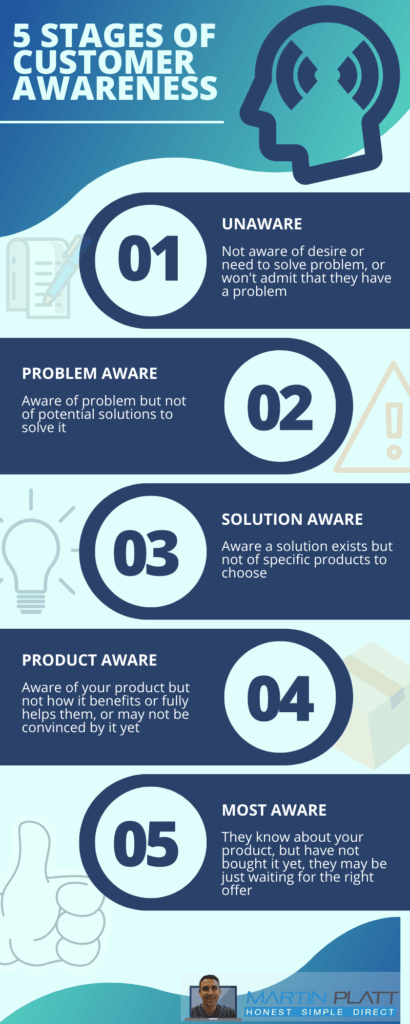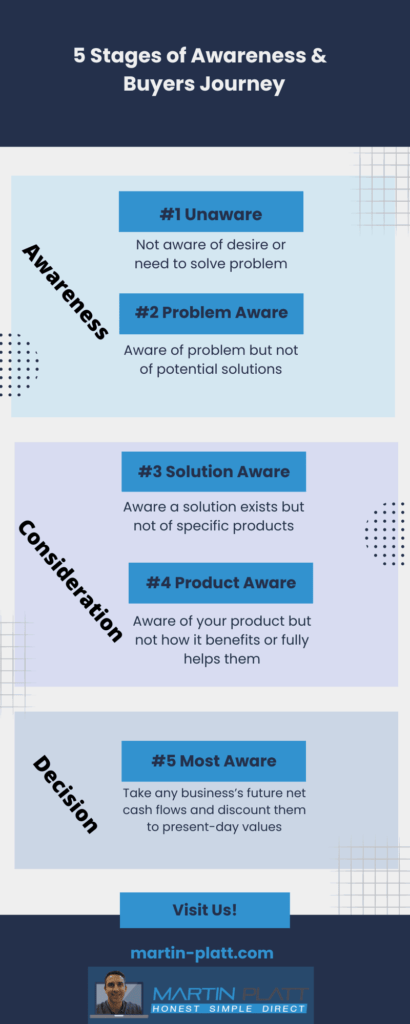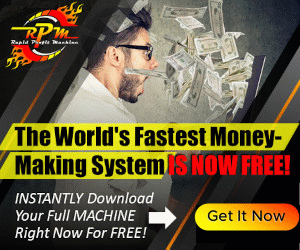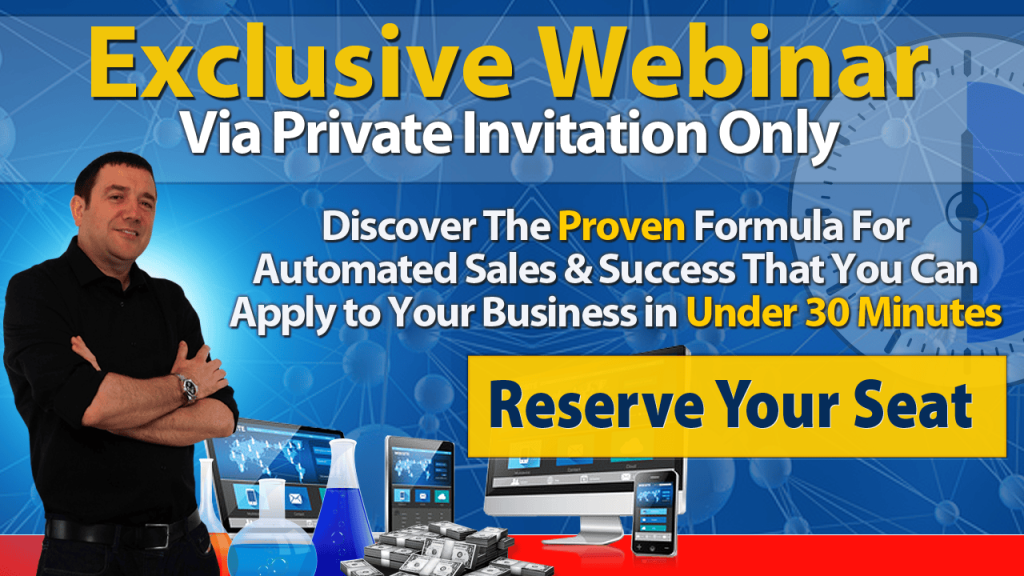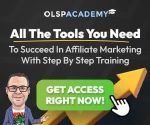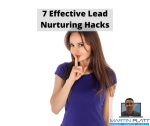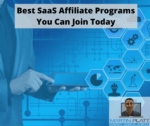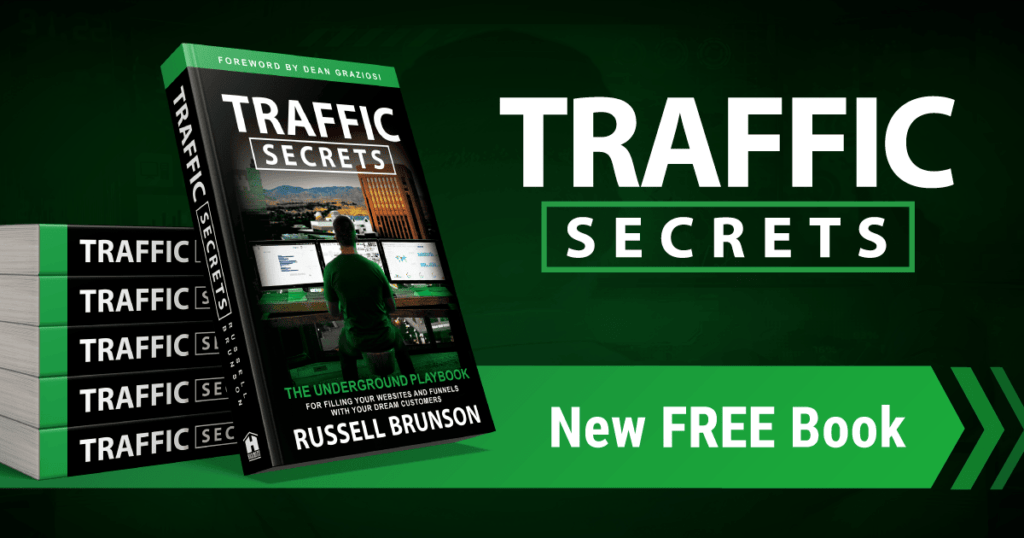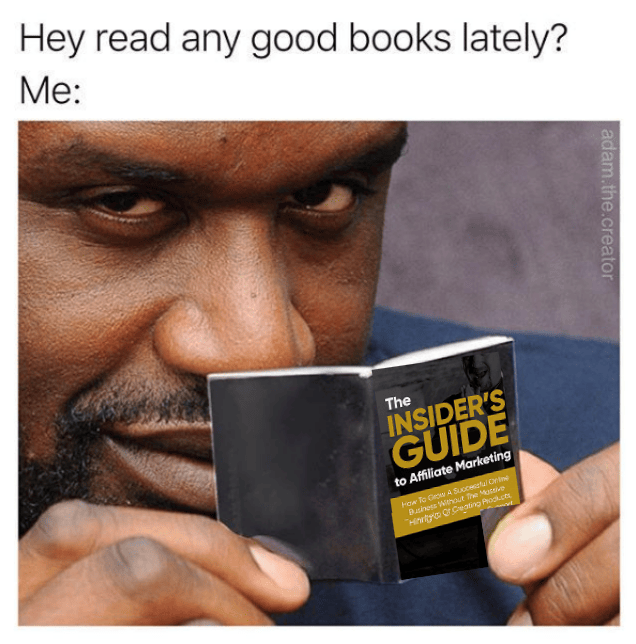Beginner’s guide to the 5 levels of customer awareness
The 5 stages of awareness allow you to communicate in the most efficient way with your prospective customers.
If you are not aware of this, your content and communications will not get them excited, and want to know more.
If you are not aware of these stages, then please read on to find out more.
What are the 5 Stages of Awareness for customers?
If you're impatient like I am, and want to know the answer first, here they are:
If you want to dig into the details of what these mean and how to target each one, keep reading...
Why Do I need to know about the 5 stage of awareness?
To be a successful marketer, you need to know your audience.
And to know your audience, you first need to understand their level of "aware"-ness.
There are five levels of customer awareness: unaware, problem aware, solution aware, product aware, and most aware.
In this article, we'll explore each level in detail so that you can better understand your target market and create marketing campaigns that resonate with them.
Let's get started!
The level of customer awareness: It's not rocket science
As any salesperson knows, customer comprehension is crucial in the buying process.
At the beginning of the customer journey, they may be completely unaware prospects, or only vaguely aware of their problem.
As they move through the process, they become more knowledgeable of potential solutions and products.
By the end, they should be well-informed about their options, know of the best solution and be ready to make a purchase.
However, customer comprehension can vary greatly from one individual to the next.
Some customers may do extensive research and come into the process highly informed.
Others may know very little and need more guidance.
As a result, it is important to gauge customer comprehension levels early on and adjust your approach accordingly.
It is important with all marketing and advertising be it affiliate marketing or your own products, you need to talk to each stage to get your sales funnels to convert.
With the right approach, you can help even the most unaware customer become a savvy shopper.
The problem with only having one message
Your marketing messages are more than just words on paper.
They have the power to connect with your prospects and turn them into customers, but only if you're speaking their language.
This means understanding where in the buying cycle in terms of knowing or believing about who YOU ARE AND WHAT PRODUCTS YOU OFFER TO THEM.
Reach customers at the right stage via advertising campaigns tailored specifically to the awareness process.
This connects one step closer toward converting leads into paying clients through effective branding strategies.
The trouble is, that most businesses only have one message for all their prospects, regardless of where they are in the awareness process.
This is a huge mistake! Not only does it mean that you're not connecting with your audience, but it also means that you're not making the most of your marketing efforts.
What are the 5 stages of awareness?
Eugene Schwartz is a legendary copywriter and marketing professional.
Schwartz ads reportedly sold millions.
He has published several books on marketing in the past including the book "Breakthrough Advertising", which explains five different levels.
As any marketer knows, knowing the 5 stages of awareness is essential for promoting a product or service.
But what exactly are they?
And how can marketers effectively promote to prospects at different levels of awareness?
Customer awareness can be broadly divided into five levels. Schwartz established the following levels:
To reach these prospects, marketers need to create knowledge of the problem and its potential consequences. This can be done through various channels such as educational articles, blog posts, or even ads.
To reach these prospects, marketers need to educate them about how to solve the problem. Again, this can be done through various channels such as articles, blog posts, or ads.
To reach these prospects, marketers need to provide more specific information about the product or service that can address the problem. This might involve providing detailed product information, customer testimonials, or case studies..
To reach these potential customers, address questions, call out how the product could benefit them, and show how your product has addressed problems in the past.
To reach these most aware prospects, marketers need to focus on creating a sense of urgency and making it easy for them to take action. This might involve providing special offers, free trials, or discounts. To create a good environment for impulse buys and give the buyer a final nudge to purchase.
Marketers must tailor their promotions to meet the needs of a prospect at each level of comprehension.
For example, prospects who are unaware of a product or service will need to be educated about its existence and why they need it.
Eugene Schwartz - The man behind the stages of awareness
Eugene M. Schwartz was born in Brooklyn, New York, in 1925.
After graduating from high school, Schwartz enlisted in the United States Army and served in World War II.
After the war, Schwartz began his career as a copywriter at Young & Rubicam, one of the world's largest advertising agencies.
Schwartz quickly gained a reputation as one of the most successful copywriters in the business.
His campaigns for clients such as Coca-Cola, General Motors, and Ford were among the most effective and popular of their time.
In 1960, Schwartz left Young & Rubicam to start his advertising agency, Eugene M. Schwartz & Company.
Schwartz's agency was highly successful, and its clients included some of the biggest names in the business, such as Procter & Gamble, Kraft, and Pepsi.
Eugene M. Schwartz died in 2004, but his legacy as one of the greatest copywriters of all time lives on.
His work has inspired generations of advertising professionals and continues to influence the industry today.
If you're looking to improve your copywriting skills, there's no better place to start than with the work of Eugene M. Schwartz.
The 5 Stages of Awareness For Content Marketing - Explained
To be effective when creating content, it is important to understand the different stages of awareness of your audience.
This is so you or your marketing team can create an effective marketing strategy to reel in prospects or existing customers.
Content marketing at each stage should aim to educate the target audience and help them move to the next stage. Create content formats that vary to address the five stages on your website, and promote your brand to other prospects of your business.
You would start to talk to unaware people in the earlier stages of communication about what the product solves if they do not realize that they have a problem that needs to be solved.
In the same way, you wouldn't talk about how a problem when the prospect is looking for in-depth information on how the product solves their problem.
Most marketers use sales copy or content creation that does not target the five stages and this completely misses the point of what the prospect is looking for.
1. Unaware: Content marketing at this stage should aim to introduce the audience to the problem or need that your product or service can solve.
2. Problem Aware: Content marketing at this stage should aim to educate the audience about the different solutions available to them and why your product or service is the best option.
3. Solution Aware: Content marketing at this stage should aim to provide the target audience with more detailed information about your product or service and how it can solve their problem or meet their need.
4. Product Aware: Content marketing at this stage should aim to provide the target audience with even more detailed information about your specific product and its features and benefit to them.
5. Most Aware or Brand Aware: Content marketing at this stage should aim to provide the target audience with all the information they need to make a purchase decision and convince them that your product is the best option.
Content marketing is an important tool for businesses of all sizes.
By understanding the different stages of awareness, businesses can create more effective content marketing that leads to more conversions and revenue.
Understanding the Buyer's Journey in Marketing
The buyer's journey is a process that prospects go through when making a purchase.
It can be broken down into three stages: awareness, consideration, and decision.
Awareness.
In the awareness stage, prospects realize there is a problem or need but may not know how to address it.
Marketers need to educate them about possible ways to address the problem.
Again, this can be done through various channels such as articles, blog posts, or ads.
What do we need to know?
- How do our buyers define their goals and challenges?
- How do buyers educate themselves to achieve these goals or overcome these challenges?
- What happens when the buyer takes no action?
- Are there commonly misunderstood concepts buyers have with these goals and challenges?
- What factors lead to whether a buyer prioritizes the goal or challenge?
What do we need to do?
- Help your buyers to understand and overcome challenges and achieve goals
- Educate your buyers with information and content that does not have a sales focus
- Provide resources to help them better understand the problem
Consideration.
In the consideration stage, a prospect may be aware of a problem and have a general understanding of potential solutions.
To reach this prospect, marketers need to provide more specific information about the product that can address the problem.
This might involve providing detailed product information, customer testimonials, or case studies.
What do we need to know?
- Which solution categories do buyers research?
- What means of education do buyers use for solution categories?
- What strengths and weaknesses do buyers think about in each category?
- What decisions lead to buyers selecting a particular solution category?
What do we need to do?
- Understand your competitors and how their solutions address the buyer's problems, and what they do to make buyers aware of these benefits
- Understand our solutions and how they compare to competitors - strengths, weaknesses, opportunities, and threats
- Provide resources to buyers to allow them to choose the most appropriate solution
Decision. In the decision stage, a prospect may be ready to buy a product but are comparing different options.
Marketers need to focus on creating a sense of urgency and making it easy for them to take action.
This might involve providing special offers, free trials, or discounts.
What do we need to know?
- How do buyers evaluate products and decide which they will buy?
- What do buyers like and dislike about products, where is your product on that list, and are there any objections they have that you need to overcome?
- For each buyer, how does their viewpoint affect the decision to buy?
- Are buyers looking for particular features such as introductory pricing, trial periods, or money-back guarantees to help make the decision easier?
- Is there anything that the buyer needs to do to prepare for the purchase, or anything that the buyer is missing?
What do we need to do?
- Address any objections earlier in the communication with the buyer, including any negative points of the product, and attempt to turn them into positives
- Your product must have qualities that set it apart from the competition, these qualities need to be perceived by the buyer as having value.
- The message to buyers should concentrate on revealing that competitors cannot do what you do and therefore do not have the value that your product does.
Marketers must tailor their promotions to meet the needs of each prospect at each stage of the buyer's journey.
For example, prospects who are unaware of a product will need to be educated about its existence and why they need it.
On the other hand, a prospect who is considering a purchase will need more specific information about how the product can address their needs.
Content ideas for each stage of the buyer's journey
The following are examples of how you might address the concerns of prospects at the different stages of the buyer's journey. From this, you can create content, and reach your website visitors using marketing tactics that target visitors correctly. Both visitors in the early stages to product-aware visitors use product comparisons to turn prospects into buyers.
Buyers Journey - Retirement Example
Awareness Stage
Article: "Why You Should Start Thinking About Retirement"
Article: "How to Calculate How Much Retirement Savings You Need"
Podcast: "5 Money Questions to Ask Yourself Before Retirement"
Webinar: "Retirement Planning 101"
Consideration Stage
Article: "The Pros and Cons of Retiring Early"
Article: "5 Tips for Downsizing Before Retirement"
Podcast: "How to Maximize Your Social Security Benefits When You Retire"
Webinar: "Making the Most of Your Retirement Savings"
Decision Stage
Article: "How to Choose the Right Retirement Community"
Article: "What to Look for in a Retirement Home"
Podcast: "How to Make the Most of Your Retirement Income"
Webinar: "Retirement Planning for Couples"
Content for each stage of the buyer's journey should be educational, informative and provide value to the reader.
It should also be engaging and written in a tone that is relatable and easy to understand.
Buyers Journey - Losing Weight Example
Awareness Stage
Article: "Why Your Weight Affects How Healthy You Are"
Article: "How to Decide On a Strategy To Lose Weight"
Podcast: "5 Health Questions To Ask Yourself Before Visiting The Doctor"
Webinar: "Healthy Weight 101"
Consideration Stage
Blog Post: "The Pros and Cons of Calorie Restricted Diets"
Blog Post: "5 Of The Easiest Weight Loss Diets"
Podcast: "How to Safely Maximize Your Weight Loss"
Webinar: "Making the Most of Your Health"
Decision Stage
Blog Post: "How to Choose the Right Weight Loss Program For You"
Blog Post: "What to Look for in a Healthy Diet"
Podcast: "How to Keep The Fat Away"
Webinar: "Interesting Activities For Healthy Families"
How Do The 5 stages of awareness and the buyer's journey relate?
The 5 stages of awareness are good to target the stages that the buyer is within their buyer journey.
The buyer's journey simplifies how you might best communicate with your buyers to progress them through each stage.
Correctly communicating with your buyers is a key element in turning those buyers into your customers.
The buyer's journey simplifies the communications into three stages, although the messages do still need to take into account the 5 stages of awareness within them.
What is a sales funnel?
When it comes to sales, there is a process that needs to be followed to close a sale.
This process is known as a funnel, and it refers to the steps a buyer goes through to make a purchase.
The funnel typically starts with awareness, then moves on to consideration, followed by decision, and finally, purchase.
Without a funnel moving the prospective customer through these multiple stages, the funnel is unlikely to be effective, and you will be leaving money on the table, so to speak.
Marketing channels for each stage of the funnel
The first stage of the funnel is Awareness.
In this stage, the buyer becomes aware of their need or want for a product.
They may not even be aware that your company exists, but they are aware of the problem that needs to be solved.
This stage would typically be something along the lines of an ad that explains or alludes to a problem and promises answers in some way.
In the funnel, we target un-aware people with what is known as a "lead magnet".
This is some content - video, ebook, blog posts, and/or an email marketing series that will answer the burning questions that the un-aware people now have.
These answers are provided in exchange for an email address.
This action then moves the subscriber to the problem-aware phase in the awareness stage of the buyer's journey.
The subscriber can consume the content which makes them fully aware of the problem, and keen to find solutions, which takes them to the second stage of the buyer's journey.
The second stage of the funnel is Consideration.
In this stage, the aware prospects begin to research their options and compare different types of solutions to address their pain points.
This phase may discuss how to solve problems generally, and at a level of low detail.
Finally, your product can be introduced that delivers the solution and yet more value than your competitors.
The third stage of the funnel is Decision.
In this stage, the buyer makes up their mind about what product they want to purchase.
They have compared different options and decided that your company is the best fit for their needs.
This stage would be to enforce the benefits of the product, and highlight the value, potentially against other competitors.
This could be emails in a series covering one or two benefits, then links to the sales page, and over a few days cover more benefits.
The fourth and final stage of the funnel is Purchase.
In this stage, the buyer completes their purchase and becomes a customer.
This stage is to get the customer off the fence and to buy.
This could be a limited-time discount, extra bonuses such as other products that make the purchase a "no-brainer", due to the value opportunity, and fear of missing out.
The sales funnel is a helpful way to think about the journey a buyer goes through when making a purchase.
By understanding the stages of the funnel, you can better tailor your marketing and sales efforts to match the needs of the buyer at each stage.
If you're keen to get ideas from how others target the stages in various different funnels, see funnel hacking for more information, and to get up to speed quickly!
